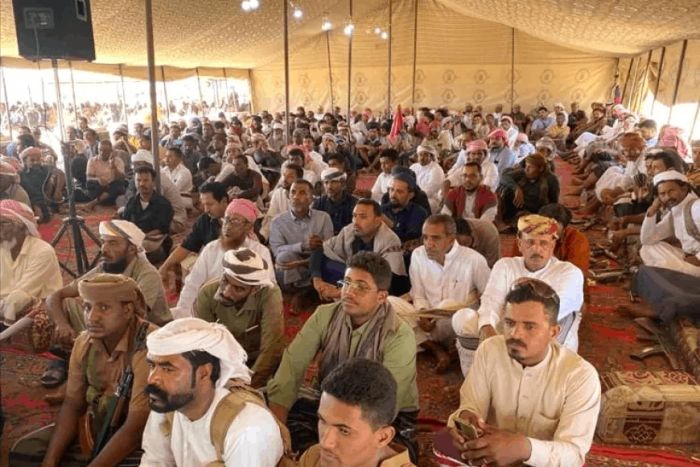Hadramout Between the Hammer of Shadowy Entities and the Anvil of Regional Conflict
Hadramout Governorate in eastern Yemen is experiencing a marked escalation in political and regional tensions, fueled by the rise of new factions, some populist in nature, others with contentious jihadist ties, that threaten to reshape not only the governorate’s political landscape but potentially all of southern Yemen.
The most striking development came on Monday with the unveiling of a new political movement, the "Current for Change and Liberation," headed by former Al-Qaeda figure Abu Omar Al-Nahdi, during a sparsely attended gathering in the city of Seiyun.
The group’s emergence, championing slogans of change, justice, and independence, coincides with a pivotal moment for Hadramout—one characterized by mounting demands for federalism and self-rule, deepening rifts within the Hadramout Tribal Alliance, and worsening tensions between local tribal leaders and the Southern Transitional Council (STC).
Shadowy Entities: Local Faces, Regional Patrons
The Current for Change and Liberation, led by the elusive Al-Nahdi, a high-profile Al-Qaeda defector since 2018, once known by the moniker "Companion of Al-Shar'a in the Iraqi Jihad", has sparked intense speculation about its backers, given his history with transnational armed groups.
Local sources point to indirect Turkish support for certain figures within the movement, part of Ankara’s broader effort to expand its sway among Islamist networks and conservative Sunni communities.
Though the group espouses state-building and social justice, analysts caution that its leadership’s extremist ties make it a volatile project, ripe for exploitation by external actors pursuing regional or ideological agendas.
Tribal Alliance: Divided and Infiltrated
Meanwhile, Sheikh Amr bin Habrish has resurfaced after a prolonged absence, including a stay in Saudi Arabia, to convene a major assembly of the Hadramout Tribal Alliance in Al-Hadhba. There, he unequivocally called for autonomy within a federal Yemen, declaring, "Hadramout will be governed only by its sons".
Yet his move was swiftly countered. A rival faction within the alliance, backed by the STC, held a parallel meeting in Al-Uyoun, culminating in a vote of no confidence against bin Habrish—laying bare the alliance’s internal fractures and the broader struggle to weaponize tribal loyalties.
The Forces Fueling the Crisis?
Informed sources suggest that regional backing for the Current for Change and Liberation aligns with efforts to remap alliances in eastern Yemen, as external powers grow wary of shifting dynamics.
At the same time, regional players with stakes in Yemen are maneuvering to co-opt tribal networks and reposition proxies, ensuring their influence endures in any future political or military settlement.
Bin Habrish, once a marginal figure, is now seen as a strategic asset to counterbalance rival forces in eastern Yemen, reflecting the intensifying regional contest for control over this strategic territory.
What Lies Ahead for Hadramout?
Hadramout’s accelerating turmoil signals a precarious political and security realignment, driven by competing visions of self-rule, ideological factions, and tribal rivalries.

Possible scenarios include:
A spiral of tribal and political fragmentation, as rival groups push for autonomy without a unifying framework, risking violent clashes.
Limited but destabilizing confrontations, exacerbating governance breakdowns and service disruptions amid a power vacuum.
The repackaging of extremism under political banners, particularly through movements like the Current for Change and Liberation, which could reintroduce jihadist elements to the fray.
Direct or proxy intervention by regional powers, accelerating a de facto partition of influence rather than fostering unified governance.
Hadramout now stands at a crossroads, where tribal loyalties, separatist ambitions, and geopolitical rivalries collide. Amid the rise of dubious actors and competing agendas, the urgent task is to forge a cohesive national framework, before the governorate becomes Yemen’s next flashpoint.


